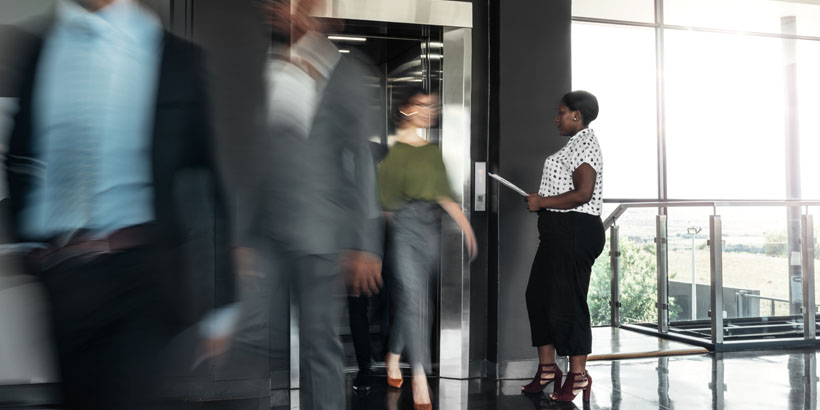
While the threat of the COVID-19 pandemic is still significant, recent advances in the vaccination program have alleviated much of the risk, and thankfully the situation does seem to be improving. However, it is vital that complacency doesn’t creep in, and a growing number of people have stated they intend to exercise caution when in certain situations. This creates a balance between ensuring businesses and organisations can function, whilst also delivering an acceptable level of social distancing and site management to ensure users feel safe.
As with many threats, businesses and organisations must consider two elements: the actual risk to those using their site, and the perceived risk for staff, users and visitors. While perceived risks don’t always equate to an actual threat, the reality is few businesses want to alienate workers and customers, especially during turbulent times such as a global pandemic.
It also needs to be remembered that while the situation is currently improving, there is not a great deal of experience with the COVID-19 virus, and going forward there will still be a need for careful management of sites where people gather, or where there is a steady throughput of individuals.
People will expect their employers and companies they do business with to implement measures which safeguard their wellbeing, and for many organisations this will mean implementing procedures which manage the footfall in confined spaces, and which ensure sensible precautions can be implemented, along with any regulatory requirements. However, it is also critical that such steps do not inconvenience either the business itself or its customers or contractors. One solution comes through the implementation of an advanced and cost-effective access control solution.
Inner Range offers a number of access control and security solutions, which can be tailored to meet the exact needs of virtually any site. All the company’s products, including the entry-level access control and intruder detection system Inception, allow site management teams to count people in and out of specified spaces, ensuring they have real-time information about occupancy. The system can also be configured to restrict access once a defined occupancy threshold is reached.
To ensure flexibility, the system’s occupancy thresholds can be individually set for differing areas. For example, the entire building could have an occupancy threshold, or levels could be set for specific departments, individual offices or rooms, car parks and even lifts.
Once the occupancy level is reached, the system suspends further access permissions until the occupancy count reduces. Accurate real-time occupancy data can be sent to the health and safety team, allowing immediate monitoring. Notifications can be created if there are any problems, ensuring immediate response when necessary. Reports can also be generated at any time to check the occupancy status of any area, and these can also be used to assist with planning by identifying times and places which are subject to higher-then-desired traffic.
Inception can also produce trace reports to find specific people, for example to help locate the nearest first aider or security person in an instant.
Inner Range’s enterprise-level intelligent access and security system, Integriti, can be integrated with a range of third-party systems to further support the return to work as it can be interfaced with entry turnstiles and lifts to create seamless, touchless access and egress. Users are issued with secure proximity cards which are programmed with encrypted information including individual access permissions. When the credentials are presented to embedded readers in entry turnstiles and integrated lifts, access is either permitted or denied, based upon the relevant access privileges.
Where appropriate systems are in place, lift integration can make use of destination control. This means the lift software identifies the user’s ‘home floor’ and calculates the quickest lift. The user is then directed to the most efficient lift via a display screen on the turnstile. This reduces crowding in reception areas and corridors and ensures most users do not need to touch anything when entering or leaving the building.
Visitor management systems can also be integrated, ensuring visitors have a swift, touchless entry route too.
Integriti can also identify close contacts of anyone displaying symptoms of COVID-19, or other infectious diseases, by generating detailed reports of where the infected person has been and who else has been near them. The contact tracing report can be generated and shared quickly and easily, identifying the doors an infected user has passed through, indicating the time they spent in each area, and which other users were near them up to 15 minutes before the infected person arrived and 60 minutes after they left the area. The report is customisable, and multiple variations can be saved to ensure operators have what they need for a range of requirements.
